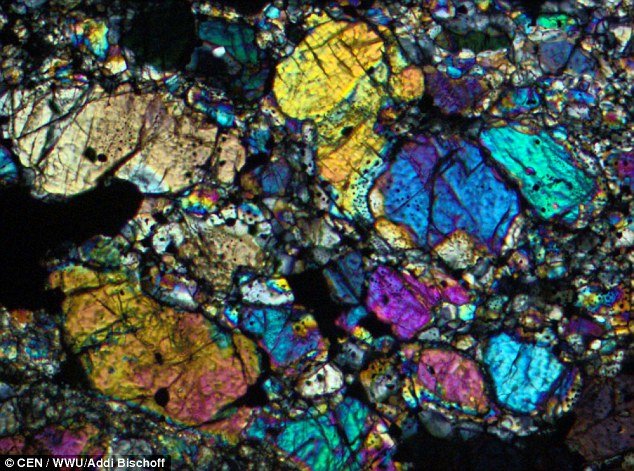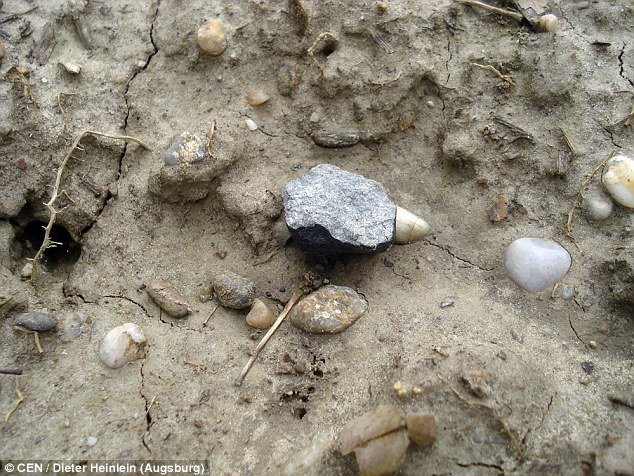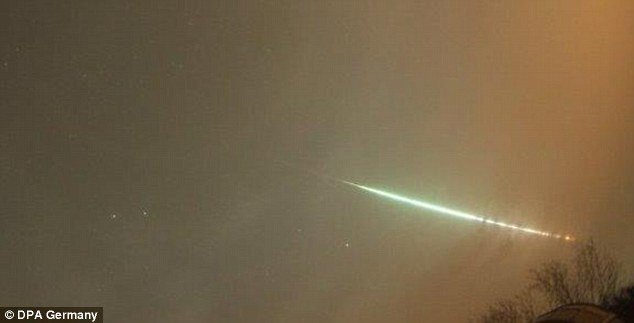
Experts from Munster said they are 'delighted' to recover several fragments identified as being of the 'LL Chondritenklasse' (LL chondrite) class of meteorite - mostly stone with very little metal inside.
The latest fragments, which struck the earth in the municipality of Stubenberg in Bavaria, are already being studied excitedly by experts, who anticipate more fragments will still turn up.
The fireball was spotted over Bavaria on 6 March.
Meteorite expert Professor Dr Addi Bischoff from the Institute for Planetary Studies at the University of Munster (WWU) said: 'Alert sky watchers spotted the meteorites burning into the atmosphere on 6 March.
'By analysing images of the entry, we were able to locate the impact point and find fragments on the ground, in total weighing 40g.
'What we have found so far from studying the fragments indicates that the main body of the meteorite had been struck several times by other celestial objects.
'The fragment that came into our atmosphere had probably broken off from the main body of the meteorite after one of these collisions.
'The main body of the asteroid is one of hundreds of thousands of asteroids travelling on a route between Mars and Jupiter.'
Although hundreds of meteorites come into the Earth's atmosphere to create shooting stars, most of these burn up before they get anywhere near the ground.
Very occasionally, however, meteorites make it all the way to the ground.

Dr Bischoff said strikes were extremely rare in Germany and added: 'In the last seven years, there has been one striking the ground on average every eight years.'
And he added that none of these were spectacular as the one which struck Chelyabinsk in Russia in 2013 that left hundreds of people injured with its explosive impact.
It is likely that the fragment may also be worth a substantial amount of money.
Earlier this week it was announced that a collection of some of the largest chunks of meteorite to have been found on the Earth to go on sale at auction for an estimated £3.4 million.
Among the 83 space rocks is the only meteoroid that has killed and a chunk of the fireball which tore through the skies over the Russian city of Chelyabinsk in 2013, hospitalising 112 people.
Some of the scorched chunks of iron and stone look primeval in their appearance while others have an almost jewel-like beauty despite their fiery descent through the atmosphere.




Reader Comments
to our Newsletter